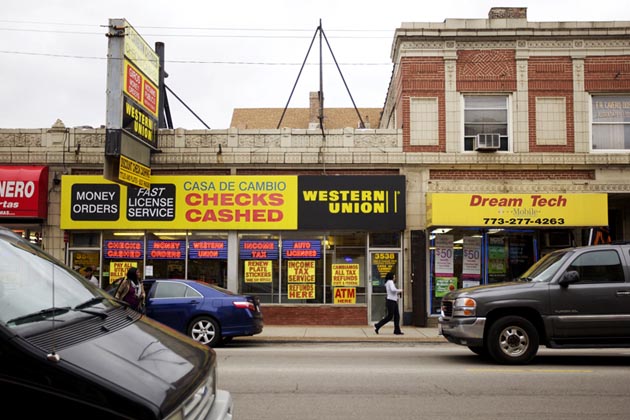Taking care of your financial obligations is important, but it can be difficult if you find yourself in a situation where a check or cash won’t do the trick. Money orders are a safe and convenient way to send money.

While money orders might seem a little outdated, they remain a strong option for many individuals. Read on to find out what exactly they are, why you might want to use one, and how the process works.
What is a money order?
Similar to a check, a money order functions as a prepaid payment method where both you and the recipient must sign for it to be cashed or deposited.
The key difference is that money orders are safer than personal checks because a third party guarantees the funds, typically whoever you bought the money order from. Most money orders only cost a few dollars, so it’s a relatively inexpensive way to send secured funds as needed.
When you buy a money order, you pay the amount you want it to be worth in addition to a small processing fee. It usually costs just a few dollars or less, but the charges vary depending on where you buy it.
How do money orders work?
Using a money order can be useful for several reasons. Most importantly, it’s a safe and efficient way to pay bills if you don’t have a checking or savings account. In fact, nearly 8% of all American households don’t have a bank account.
It’s difficult to pay online without a credit or debit card, and sending cash in an envelope can be risky. Using a money order protects your payment from the time you drop it in the mailbox until the recipient deposits it. You never have to worry about it being lost or stolen and then having to make the payment a second time.
But you might find it beneficial to use a money order even if you have a bank account. For instance, some bills take a while to be cashed, and you might be worried about keeping track of pending payments in your bank account.
Where can I cash a money order?
You can cash money orders at a bank or credit union just like you would a check. You may also be able to cash your money order at other retailers like grocery stores or check-cashing locations. You simply need to sign it and provide a valid photo ID. Then, you either get the cash or deposit the funds into your bank account.
This flexibility makes a money order an easy, convenient way to transfer money. Money orders also offer several perks and safety features that you may not find with other forms of payment.
Avoid Fees
Rather than run the risk of having a check bounce, a money order is prepaid and guaranteed, so both you and the recipient know that it won’t bounce. That also saves you from worrying about having to pay a fee for insufficient funds. Most creditors charge a hefty fine if they have to send back a bounced check.
Depending on the timing, your payment could also be considered late by that point, causing you to incur even more fees. Money orders take away any doubt that the payment is good.
In fact, many businesses and landlords don’t even accept personal checks. So a money order may be your best bet to avoid sending (and potentially losing) cash to cover your obligations.
International Use
Money orders are also useful when you want to send money overseas. Again, you’re guaranteed a level of protection since the funds are guaranteed. While mailing a money order isn’t as fast as sending a wire transfer, it is much less expensive.
An international wire transfer typically ranges between $35 and $45, but the U.S. Postal Service offers international money orders for less than $5. You can purchase a money order worth up to $700 and use either cash, a debit card, or a traveler’s check to pay for it.
Prevent Identity Theft
Another great reason to use a money order is to avoid identity theft. For example, if you decide to mail a personal check instead of cash to pay a bill, the envelope could still be intercepted by someone who wants to steal your bank account number and routing number from your check.
They might even place the check back in the mail, so you don’t notice that anything unsavory has happened.
You could have small amounts deducted from your checking account and not even notice if you don’t pay careful attention to your debits. Using a money order removes this risk entirely because none of your bank information is included anywhere on the document.
Where can you get a money order?
There are many convenient locations where you can buy a money order. The cost will likely vary depending on where you go, so if you have time, it’s best to compare the price before you buy one. This is especially important if you plan to buy money orders regularly, like to make your rent payment each month.
Your Local Post Office
One easy option is the U.S. Post Office. Not all locations provide this service, but most do. You can buy a money order worth up to $500 for $1.20 and from $500.01 to $1,000 for $1.60.
Retailers
You can also buy a money order at certain retailers. Usually available at the customer service desk, many grocery stores, pharmacies, gas stations, and convenience stores like Walmart, Kmart, Safeway, Kroger, Meijer, CVS, & 7-Eleven sell money orders. They typically cost around $1.
Credit Unions or Banks
Another option is to go to your local bank or credit union. You’ll likely have to pay anywhere between $5 and $10 for the service, so it’s probably not the best option for a regular payment. However, for a one-time convenience, it might be worth it.
Money Store
The final place to get a money order is at a money store. The most well-known and trusted name is Western Union, which offers domestic money orders online, in person, or by phone.
Other stores like payday loan stores and money transfer services may provide money orders, but you need to ensure they’re reliable to avoid getting scammed.
That brings us to another word of caution regarding buying money orders online. If you take this route, make sure you select a company you know and trust. It’s also important that your recipient feels the same way. You should both be comfortable with the origin of the money order, so you don’t have to worry about scams or outrageous fees.
Furthermore, note that most places require you to use cash, a check, or a debit card to purchase one. Credit cards typically aren’t accepted as a form of payment.
Money Orders vs. Cashier’s Checks
A money order and a cashier’s check are both guaranteed forms of payment that are issued by a financial institution or government agency. They are both generally considered to be safe and secure methods of payment, as they are issued by a trusted source and are less susceptible to fraud than personal checks.
However, there are also some differences between the two. One difference is the way they are obtained. A money order can typically be purchased from various places, such as banks, post offices, and retail stores. However, a cashier’s check must be obtained from a bank or credit union.
Another difference is the amount of money that can be written on each. Money orders generally have a lower maximum limit, typically around $1,000, while cashier’s checks do not have a maximum limit and can be used to pay larger amounts.
A cashier’s check is generally more expensive than a money order. Additionally, a cashier’s check requires multiple signatures and authentication processes, making them more difficult to forge.
How can you track a money order?
Companies and financial institutions offering money orders take special care to ensure the safety and security of your funds. First, you’ll receive a receipt as proof of payment.
It will either be a carbon copy or a separate receipt that includes all the pertinent information regarding your purchase. Be sure to keep this information safe in your records in case you need to reference it in the future.
Another essential piece of information you’ll receive after buying a money order is a tracking number. Similar to tracking a package in the mail, you can use your money order’s tracking number to confirm that your recipient did indeed receive it.
Lost or Stolen Money Orders
If your money order gets lost or stolen, you can take your receipt and tracking number to the location where you purchased it to get help.
Typically, your options are either to get a refund or get a replacement money order. However, some places may charge a fee, which may be something to consider when deciding where to purchase your money order.
But if the stolen money order is worth a lot of money, then a $15 replacement fee may not seem like much compared to the thought of potentially losing all that cash with no chance of getting it back.
Bottom Line
If you don’t want to send checks or cash, or you have a creditor who prefers to be paid by money order, this convenient form of payment can make taking care of bills a lot easier (and risk-free) for all parties involved. For just a small fee, you get to send funds that are third-party guaranteed and trusted by both you and your recipient.




